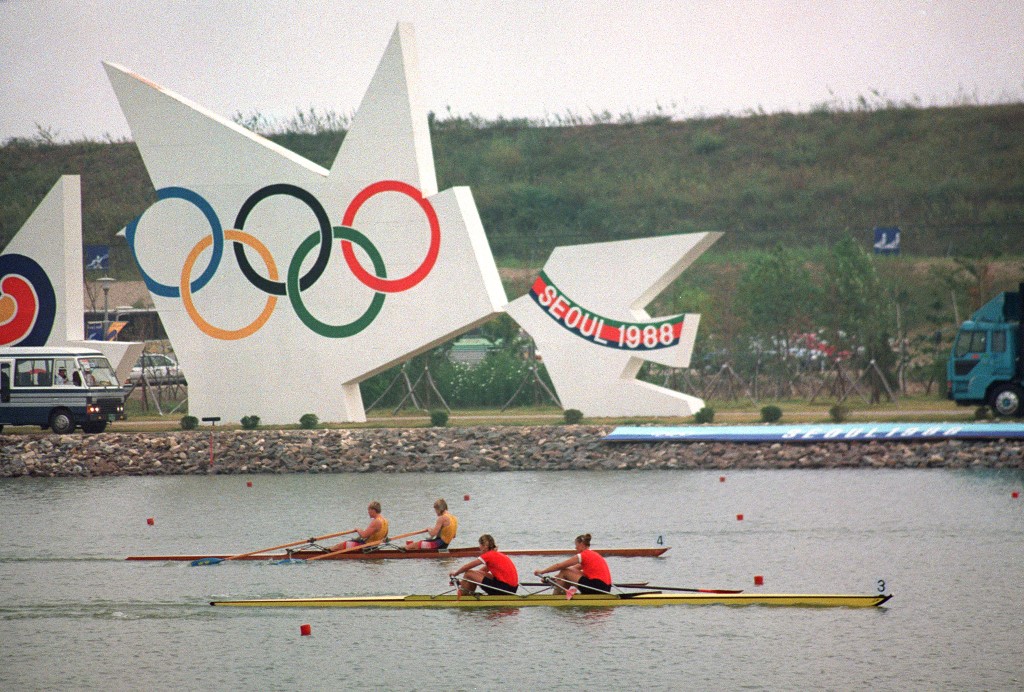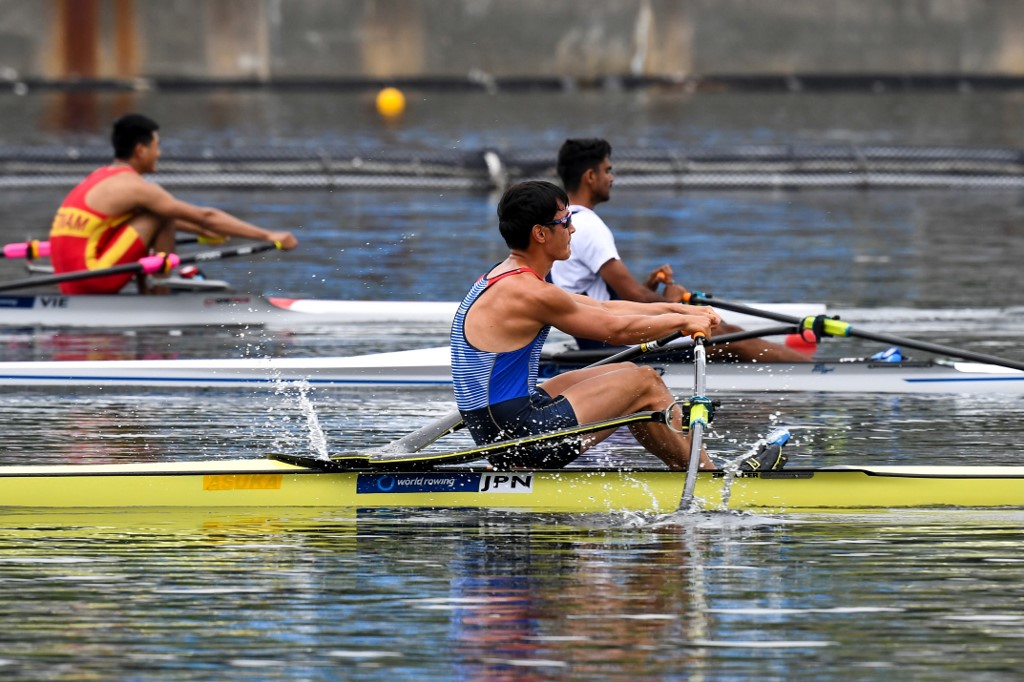EXPLAINER: Rowing at the Olympics
Things to know about the rowing competition at the 2020 Tokyo Olympics:
THE ABSOLUTE BASICS

Rowers of the women’s competition in action on the Han River, 25 Sep 1988, during the summer Olympics in Seoul. (Photo by GERARD MALIE / AFP)
- There are two distinct categories of events, contested on a 2,000m course: sculling and sweep.
- Sculling involves the use of two oars per person, with competitors rowing solo or in teams of two or four.
- Sweep teams of two, four and eight race with competitors using one oar each.
HOW MANY MEDALS?
There are 14 gold medals up for grabs, with eight sculling events and six sweep.
WHAT HAPPENED IN RIO?
Britain topped the medal table for a third Olympics in a row, while New Zealand’s veterans also shone, with Mahé Drysdale claiming his second gold medal in the men’s single sculls, and Eric Murray and Hamish Bond successfully defending their 2012 title in the coxless pair.
The United States picked up a third straight gold in the women’s eight.
WHAT CAN WE EXPECT IN TOKYO?

As with Rio in 2016, weather at the venue could threaten to disrupt the competition itself, with concerns over the windy and hot conditions at the Sea Forest Waterway venue.
For the first time since 2000, the Philippines will be represented in the rowing event of the Games after Cris Nievarez booked a slot to compete in men’s sculls.
WHAT’S NEW?
This year’s rowing program will feature an equal number of events for men and women for the first time. The women’s coxless four was added to the program, while the men’s lightweight coxless four was removed to accommodate it.
WHEN IS IT HAPPENING?
July 23 through July 30.
WHERE IS IT HAPPENING?

Japan’s Ryuta Arakawa (front) competes during the men’s single sculls semi-finals of the 2021 World Rowing Asia-Oceania Olympic and Paralympic Continental Qualifying Regatta in Tokyo on May 7, 2021, at the Sea Forest Waterway, where the Olympic and Paralympic Games events will be held. (Photo by Kazuhiro NOGI / AFP)
Sea Forest Waterway in Tokyo Bay.
HOW DID WE GET HERE?
The sport is woven into the very fabric of the Olympics with Baron Pierre de Coubertin, the founder of the modern Games, having been an avid rower himself. Rowing made its debut at the 1900 Games, though it had been on the program four years earlier only to be canceled due to bad weather.
WELL FANCY THAT

Rowers are widely considered among the greatest athletes pound-for-pound in the Olympics, with the sport demanding lean frames able to produce an enormous amount of power over a short competition.
“The toll it takes on the body is just super significant,” British Rowing Performance Director Brendan Purcell told Reuters.